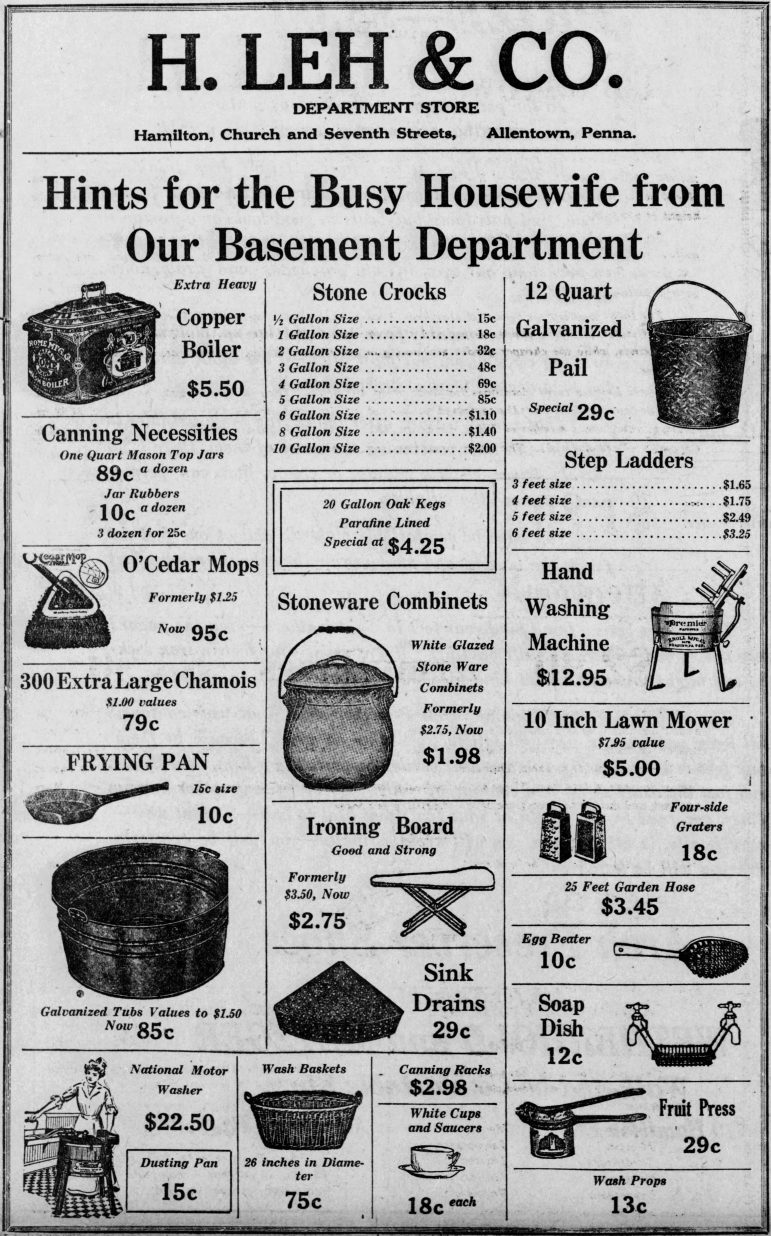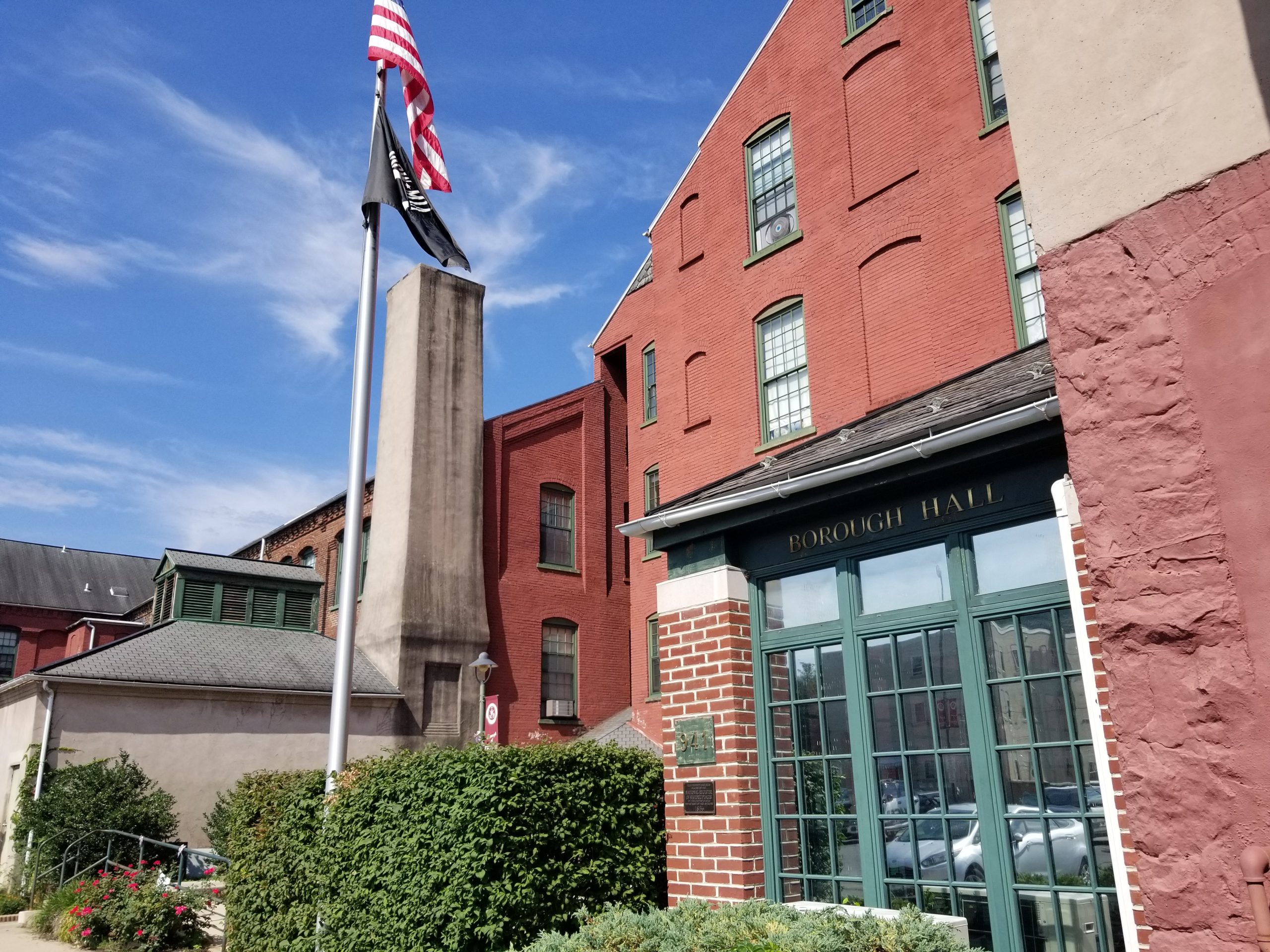One of the most common Google searches is a question that begins with “why” and ends with “is getting so expensive?” Inflation is a concern for many Americans–perhaps, even an obsession–and when you look at what food and household wares cost a century ago, it isn’t difficult to understand why.
The two ads below appeared in the Morning all in the early 1920s, and highlight prices you’ll probably wish you could pay today.
In their Dec. 23, 1922 ad, Union Meat Market at 919 Hamilton Street in Allentown advertised specials on Christmas dinner table staples and urged customers to “come early” to get their pick of the best cuts from their butchers.
Small roasting hams were just 22 cents; a “sweet and tender” boneless rib roast was 24 cents a pound; and Swift’s smoked and “sugar-cured” skinback hams were just 15 cents.
Eggs were 35 cents a dozen, butter was 52 cents a pound and lard was 11 cents a pound.
A one-pound loaf of bread was 5 cents and mixed nuts were 25 cents a pound.
The store was also open Friday evening until 8:30 p.m., to help shoppers stock up.
On Aug. 31, 1921, H. Leh & Co. advertised an end-of-summer sale at their department store at Hamilton and Seventh streets in Allentown. Along with Hess Brother’s, Leh’s (as it was commonly known) was a major draw for shoppers to the city’s downtown.
Leh’s ad clearly targeted female customers, even promoting the items on sale as modern conveniences the “busy housewife” would likely find irresistible.
A frying pan at the department store cost 10 cents, a wash basket was 75 cents, an ironing board cost $2.75 and a hand washing machine was $12.95.
To put those prices in perspective, something that cost $12.95 in 1921 would cost approximately $197.50 today, when inflation is taken into account. However, that 10-cent saute pan would still be a bargain 100 years later, when it would cost only about $1.50.


About this column: Olden Days is a Saucon Source series in which newspaper articles in the public domain are used to recall area news from the late 1800s and early 1900s. You can help support “Olden Days” by making a voluntary contribution and becoming a Saucon Source member today. Learn more here. And don’t forget to sign up for our newsletter, to receive the latest news delivered to your inbox three evenings per week.







